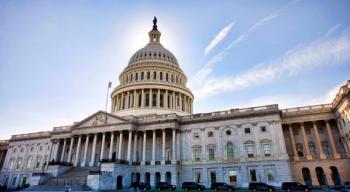
What Will Payers Do If Courts Strike Down the ACA’s No-Cost Requirement for Preventive Services?
A federal district court ruling today could jeopardize coverage of preventive services recommended by the U.S. Preventive Services Task Force. Some payers may be cautious about pulling back on full coverage of preventive services, but if the ruling stands, experts fear the undoing of a key provision of the Affordable Care Act will result in a patchwork of coverage — and a worsening of healthcare disparities.
Mark Rakowski says he strongly believes in the health value of preventive services like cancer screenings, HIV prevention drugs, vaccines, alcohol abuse counseling, and tobacco cessation treatment. He likes that the Affordable Care Act (ACA) makes these services more affordable to
But the president of the nonprofit Chorus Community Health Plans in Milwaukee says that a federal lawsuit filed by conservative groups in Texas to eliminate that ACA preventive services requirement for more than 100 services may force him to do something he doesn’t want to do – make enrollees pay deductibles or copayments for these services.
Today, U.S. District Judge Reed O’Connor struck down some of those coverage requirements. He found that members of one of the agencies making coverage recommendations, the
So payers will have to decide whether to keep first-dollar coverage for HIV prevention and for the 52 preventive services recommended by the USPSTF, or else impose deductibles and copays for at least some of those services. Services recommended by that agency include screening tests for breast cancer, colorectal cancer and lung cancer, sexually transmitted infections, diabetes, and depression.
O’Connor upheld the constitutionality of two other agencies that recommend preventive services — the
The plaintiffs in
Rakowski says he may have to add cost sharing to some of his plans so they would remain competitive on Wisconsin’s ACA marketplace, while continuing to offer plans with no-cost preventive coverage at a somewhat higher price. That’s because he expects his competitors to establish deductibles and copays for preventive services, so they can reduce their premiums on bronze plans by 2% — enough to prompt many exchange buyers to switch plans.
“I think our competitors will add cost sharing,” he said. “I hate to admit that we’d have to strongly consider following suit.”
Item-by-item decisions
Many health plans and self-insured employers around the country would face this same dilemma. The result could be a patchwork of different health plan designs and preventive services coverage in various industry sectors and different parts of the country. People who shop for healthcare insurance may find it difficult to find that fully covers preventive services.
The ACA’s first-dollar coverage rule for preventive services applies to private plans in the individual and group markets
Insurance experts and leaders of business groups focusing on healthcare purchasing predict that many health plans and self-insured employers will consider adding cost-sharing for at least some preventive services. They will make those decisions based on evaluations of costs and expectations about how employees and enrollees will react. The personal views of company executives may also be part of the equation.
The most likely services to be targeted for cost sharing are HIV prevention and contraception, due to the religious and moral judgments of the decisionmakers, some experts predict. Employers that feel most financially strapped and have workers who earn less money and stay with the company for shorter periods will be the most likely to impose out-of-pocket costs, they add.
Spending on ACA-mandated preventive services comprises 2% to 3.5% of total annual spending by private employer health plans, or about $100 to $200 per person, according to the
“Many employers are likely to take a fresh look at the list of preventive services and decide item by item what they can make subject to cost sharing in the future,” says
It also could complicate the ACA’s risk-adjustment program, which transfers funds from plans with lower-risk enrollees to those with higher-risk members. That’s because plans that keep a zero-cost policy for preventive services such as HIV prevention, diabetes screening, and lung cancer screening for smokers may gain a higher-risk population, forcing them to eventually add cost sharing to survive financially.
Several large commercial insurers and health plan trade groups either did not respond to requests for comment or declined to comment until they have a chance to study O’Connor’s ruling and see the remedies he ultimately orders.
Payers may tread lightly
Because many Americans are now enrolled in high-deductible health plans, cost sharing for preventive services could mean hundreds or thousands of dollars in additional out-of-pocket expenditures for healthcare. In 2020, the average annual deductible in the individual insurance market was $4,364 for single coverage and $8,439 for family coverage,
Still, some experts say employers will be cautious about increasing out-of-pocket costs for employees, who already face high medical spending. That’s a particular concern for employers because they want to encourage their workers to get screening tests to prevent expensive diseases like colon and breast cancer, says Jim Winkler, MBA, chief strategy officer for the Business Group on Health.
Worsening of healthcare disparities
Imposing cost sharing for preventive services would reverse a growing movement among employers in recent years to expand coverage of clinically effective care without deductibles or copays. It also could hamper intensifying efforts to reduce health disparities for lower-income Americans, people of color, and the LGBTQ population.
“Black and brown communities and people who are financially challenged will be disproportionally harmed by the return of cost sharing,” says
That’s especially true for no-cost coverage of pre-exposure prophylaxis for HIV, a highly effective daily drug regimen that prevents high-risk individuals from acquiring HIV. The plaintiffs in the Kelley lawsuit singled out PrEP, arguing that the ACA mandate forces them to subsidize “homosexual behavior” to which they have religious objections, in violation of the Religious Freedom Restoration Act of 1993.
Since 2020, health plans must fully cover PrEP drugs and associated lab tests and doctor visits, which otherwise can cost several thousand dollars a year. Of the 1.1 million people who could benefit from PrEP,
“This disproportionately impacts Black and Latino people,” comments Carl Schmid, executive director of the HIV + Hepatitis Policy Institute, who also noted the importance of the ACA’s no-cost coverage of tests for hepatitis and sexually transmitted infections. “If first-dollar coverage went away, people won’t pick up the drug. That would be extremely damaging for our efforts to end HIV and hepatitis.”
A broader issue, experts say, is that eliminating the no-cost requirement for preventive services and leaving coverage decisions to health plans and employers will destabilize the health insurance markets, one of the big problems the ACA was intended to fix, experts say.
Plans will compete by designing their benefits to attract the least-expensive enrollees so they can offer the lowest premiums, saddling sicker and older people with skimpier coverage and higher costs, Levin-Scherz says.
“You end up with a race to the bottom,” he warns.
Newsletter
Get the latest industry news, event updates, and more from Managed healthcare Executive.


















































